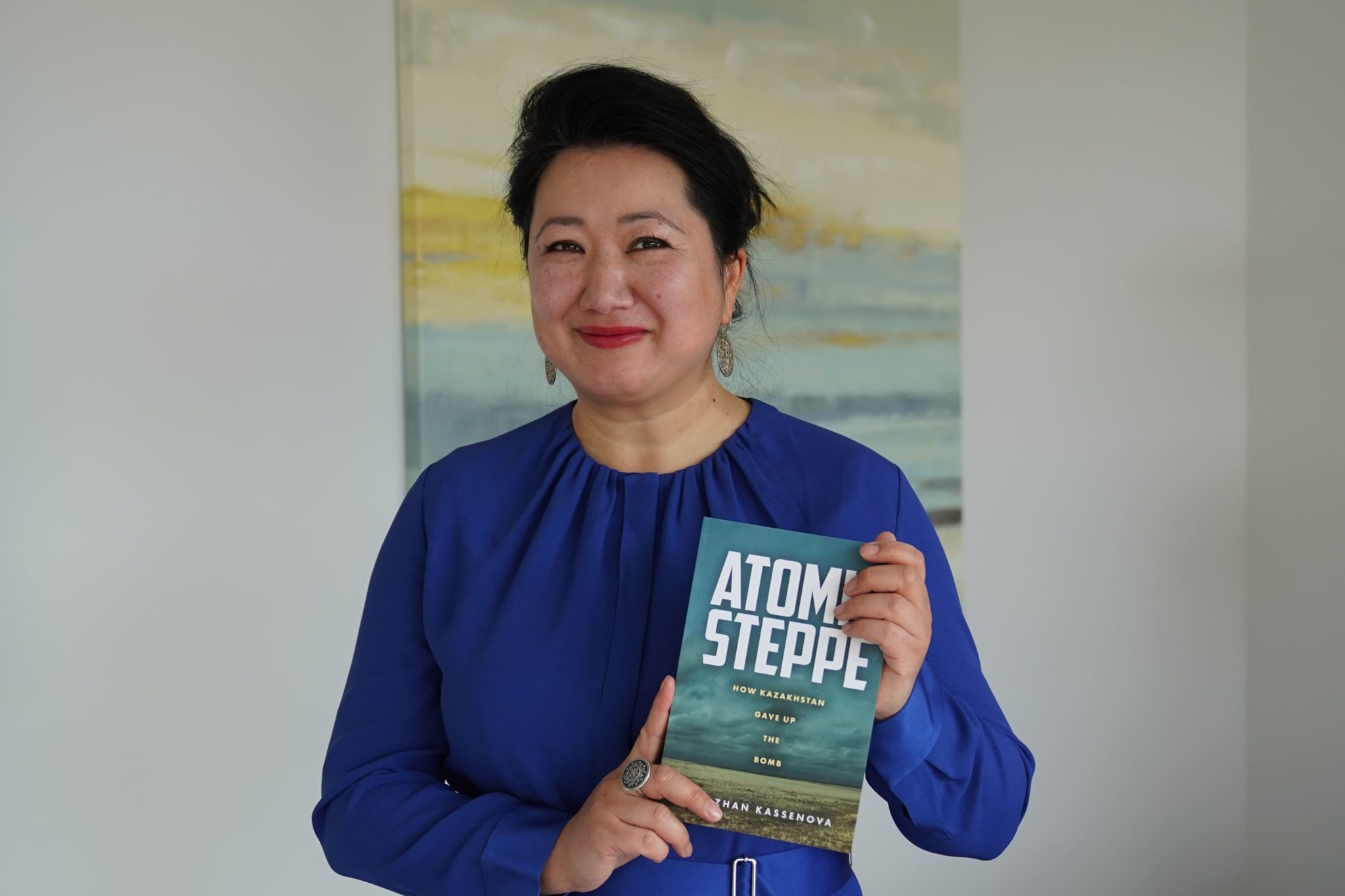On Thursday, April 6, Dr. Togzhan Kassenova visited Bloomington to give a talk on her book, Atomic Steppe: How Kazakhstan Gave up the Bomb, recently published by Stanford University Press. During this talk, she discussed her research methodologies and inspirations for writing this book and discussed developments in Kazakhstan since its publication.
Atomic Steppe tells the story of Kazakhstan’s role in the Soviet nuclear project and how local actors engaged in international activism which worked towards nuclear deproliferation. Kassenova used archival sources and interviews with local Kazakhs to tell the history of nuclear testing in the Soviet Union and its impact on people and the environment. She described the testing policies at Semipalatinsk in the Kazakh Soviet Socialist Republic, now independent Kazakhstan. The secrecy surrounding these testing practices led to a massive public health crisis in the region which was not addressed until the perestroika era of the late 1980s. The Soviet officials who conducted these tests did not inform the local Kazakhs about the dangers of living so near to these radioactive events, and treated them as expendable, collecting medical data about how they were affected by the tests without providing them proper medical assistance. Residents were even instructed to stand outside during the tests – this was to ensure that nobody was injured by falling objects inside buildings, but in reality, this exposed them to even greater amounts of radiation. Kassenova also explained the difficult social position of the Kazakhs impacted by this radiation in Kazakh society today. They are often ignored or neglected, but the medical problems they face are multigenerational and their medical treatment is the responsibility of the Kazakh government.
Throughout the talk, Kassenova emphasized the incredible agency displayed by the Semipalatinsk residents on the stage of international politics. In 1989, Kazakhs helped to create the Nevada-Semipalatinsk Anti-Nuclear Movement. This movement involved activists from around the world, including Americans who were able to communicate with Kazakhs in Semipalatinsk thanks to the decreased restrictions of communicating between the US and USSR in the late 1980s. Kassenova noted how international activists who visited Semipalatinsk were amazed at what the Kazakhs in the movement were able to achieve in the USSR, and how these achievements inspired international activists to redouble their own efforts. After delivering this lecture, Dr. Kassenova engaged in lively and interesting conversation with students and faculty at IU.
Alongside authoring Atomic Steppe, Dr. Togzhan Kassenova is a Washington, DC-based senior fellow with the Project on International Security, Commerce, and Economic Statecraft (PISCES) at the Center for Policy Research, SUNY-Albany and a nonresident fellow in the Nuclear Policy Program at the Carnegie Endowment for International Peace. She is an expert on nuclear politics, WMD nonproliferation, strategic trade controls, sanctions implementation, and financial crime prevention. She currently works on issues related to proliferation financing controls, exploring ways to minimize access of proliferators to the global financial system. Kassenova holds a Ph.D. in Politics from the University of Leeds and is a Certified Anti-Money Laundering Specialist (CAMS). From 2011 to 2015 Kassenova served on the UN secretary general’s Advisory Board on Disarmament Matters.


